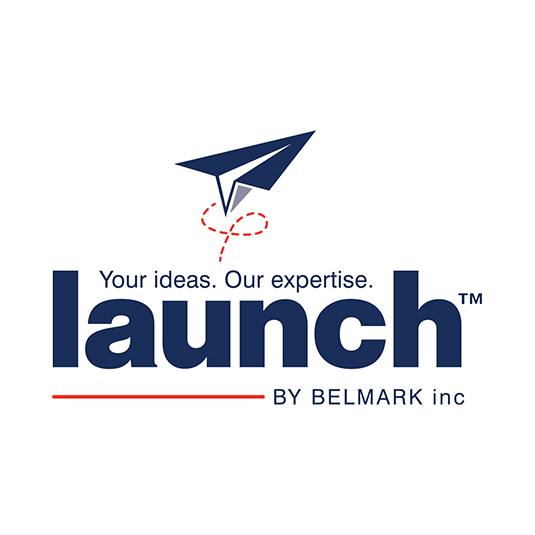Reading Time: 5 Minutes
Both the packaging industry and consumers have gravitated toward flexible packaging for several years now, and it’s easy to see why. Flexible packaging has seemingly endless benefits—it requires less water and energy to produce, allows for attractive branding with digital printing and improves the consumer experience. It can also create the opportunity for fully recyclable and other sustainable packaging formats.
Flexible packaging can support brands in almost any industry, from coffee to dairy to pet food. Allowing for countless customizations, including closures, unique finishes and tactile features, flexible packaging offers you a way to distinguish your brand from the rest. Whether you’re thinking about adopting flexible packaging or have already made the move and want to further set yourself apart, here’s what you should consider as you improve your packaging design.
The Basics: Function, Material, and Budget
The first, and arguably most important part of your pouch packaging design, is function. At a minimum, a flexible pouch needs to house and protect your product, making size, film, durability and compatibility top considerations for packaging design.
How these features take shape varies widely between products, where you’re selling them and your consumer needs. Product protection could mean adopting barrier packaging that protects against various elements. It could also mean choosing a sturdy film that helps maintain product integrity in e-commerce and the retail shelf.
Food and beverage products, such as cheese, coffee or beef jerky, will need protection from oxygen to prevent mold and spoilage. Cake, flour and protein powder need a barrier that keeps moisture out to prevent clumping. Potato chips and other snacks need protection from sunlight, and other products may need protection from heat.

Value-Adds and the Consumer Experience
Once you’ve nailed down the basics, you’ll want to zero in on the consumer. While some of the basic functions, such as product protection, help ensure a positive consumer experience, the other aspects of your packaging are critical to setting your product—and brand—apart.
Packaging features, such as visual appeal and usability, are your opportunity to shine through. Thanks to advances in printing technologies, closures, tactile features and sustainability, you can create more unique feature combinations than ever before to impress your consumers and foster brand loyalty.
Consider the following:
Brand Values
Examine your core values—how can you make sure those come through in your packaging? Think about messaging, graphics and what you want to communicate. But, don’t limit your decisions to messaging. Also consider sourcing and sustainability. While messaging and visual design give you the opportunity to articulate your values, other features, such as responsibly sourced packaging materials, eco-friendly formats or even digital features, help you follow through.
Brand Identity
As one of your consumers’ primary interactions with your brand, packaging is just as important in building your brand as any other creative asset. Packaging offers an important billboard for your message and brand story. Perhaps more importantly, it can provide an additional positive experience with your brand. Closures and tactile features, for example, enhance the consumer experience of your product while encouraging consumers to interact with it longer.
Consumer Demographic
Accessibility has become more important throughout packaging sectors, and will continue to be crucial as the population ages. Pouch packaging provides a critical opportunity to improve accessibility—compared to rigid containers, flexible packaging is already more accessible than a sealed glass jar, for example. Features such as laser scoring and closures improve that accessibility even more by allowing for easy opening and closing of the package.
Product Type
Make sure your pouch packaging features match up with your product type and price point. For example, if you sell a functional product, such as cotton balls, you may choose to have no closure or a basic, economical one. However, if you sell premium protein powder, you’ll want a premium, particle-resistant closure. If you produce generic coffee, you may opt for a minimalist pouch, but premium coffee should have a degassing valve and standup format.
Speed to Market
When do you need your packaging, and on what timeline can your packaging partner provide it?
These factors are often barriers to getting your product to market, but they don’t have to be. Whether you need to change an existing packaging design, introduce a new product or convince investors to back your startup, you can’t afford to lose time waiting for packaging—or money should your packaging becomes obsolete.
You need packaging solutions delivered on your timeline, at the scale you need it. At Belmark, you’ll get high-quality flexible packaging printed and converted in three weeks or less with fast and easy ordering and no order minimums. This model helps reduce packaging inventory and obsolescence, while allowing you to scale when you need to.
And, with Belmark’s Launch™ program, you can visualize (and feel) your new packaging design before you make the full investment. This prototyping program provides several benefits as you grow your business, launch new products or revisit your packaging.
Do What’s Best for Your Customer – and Your Bottom Line.
Today’s technology and engineering capabilities mean you have infinite packaging possibilities, in flexible formats and otherwise. The best flexible pouch design is one that balances what’s best for your product, consumer, and your brand. These three factors can help you narrow down your packaging needs and ways to add value.
Share This Story, Choose Your Platform!
Ready to get started?
Ready to get started?
Call 920.280.1282 or fill out this form and you’ll be in touch with a packaging expert in under 24 hours.
Call 920.280.1282 or fill out this form and you’ll be in touch with a packaging expert in under 24 hours.


